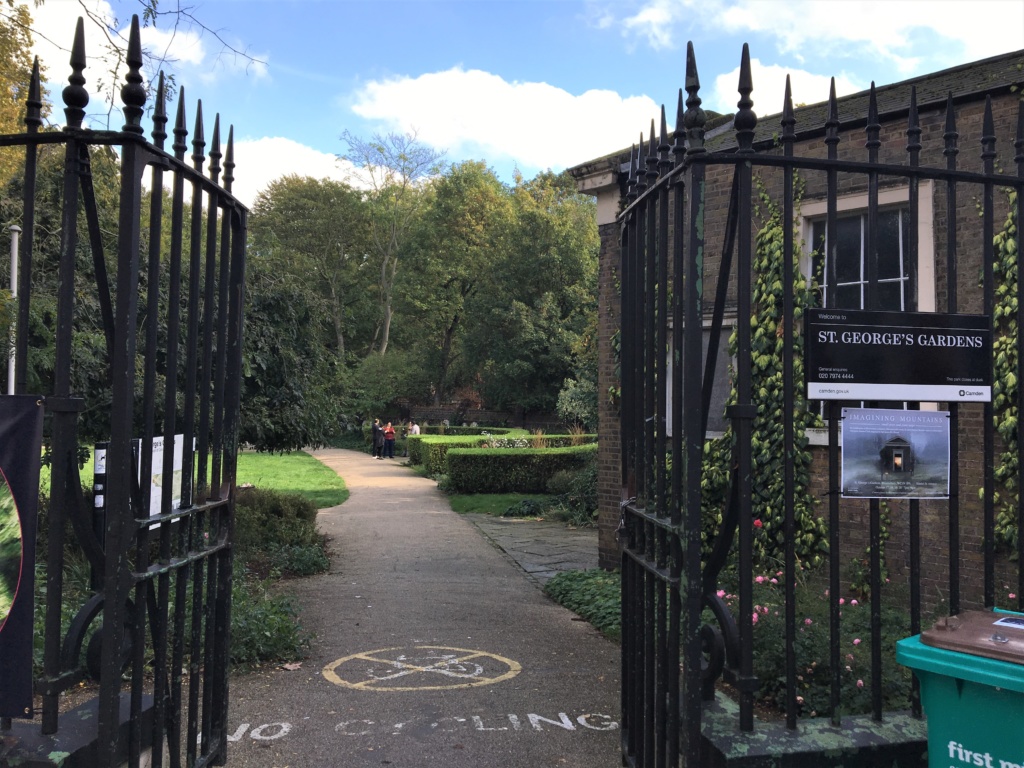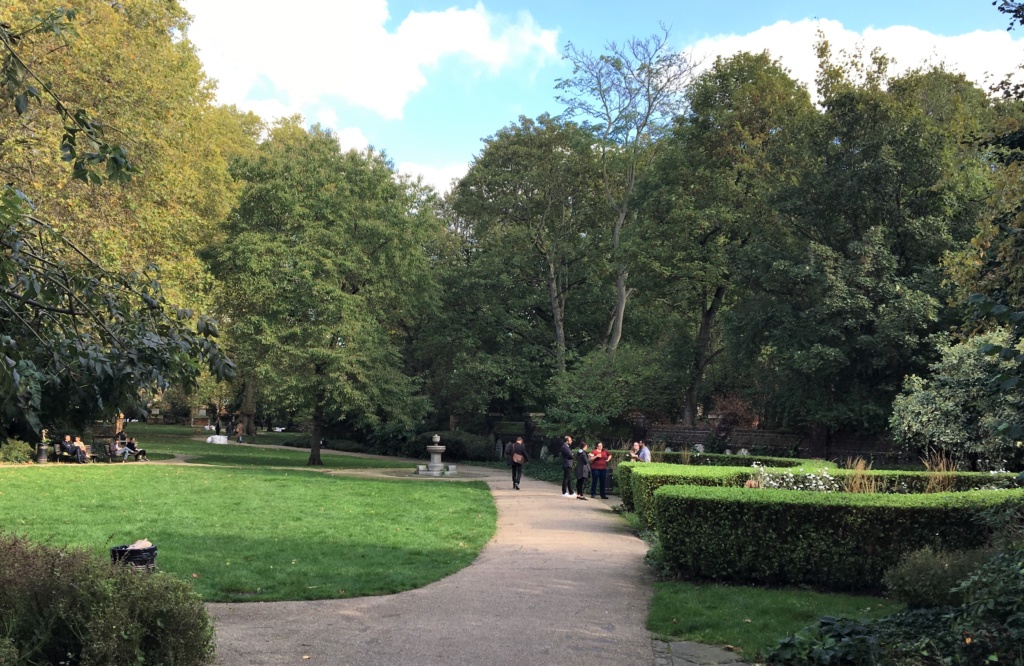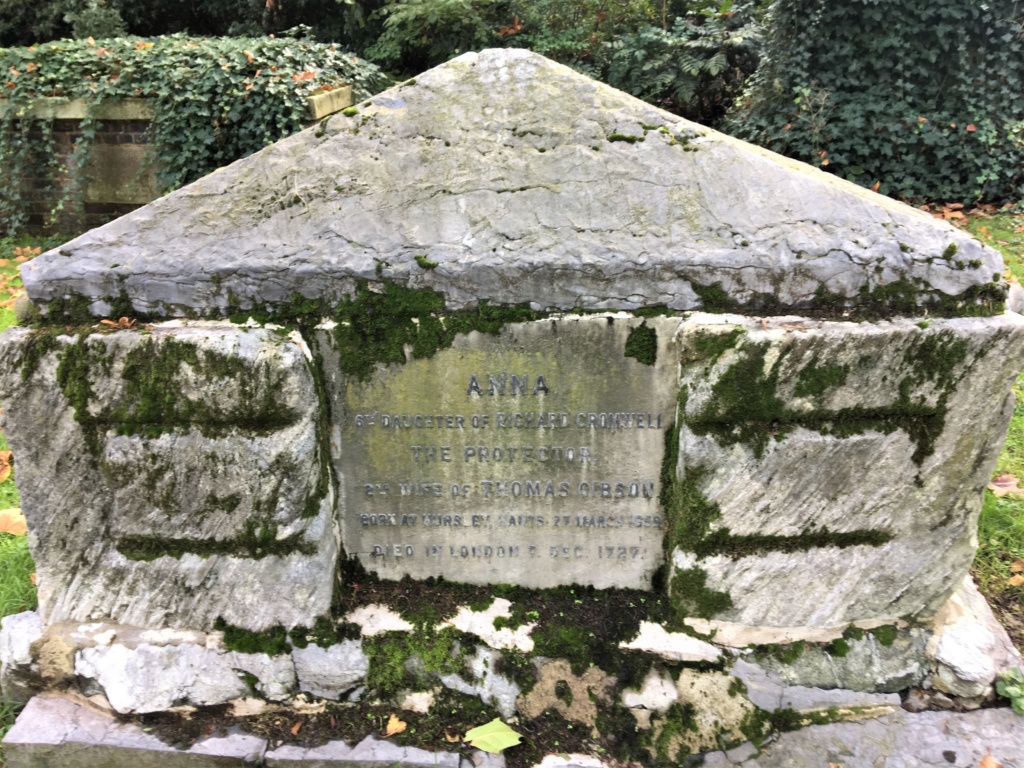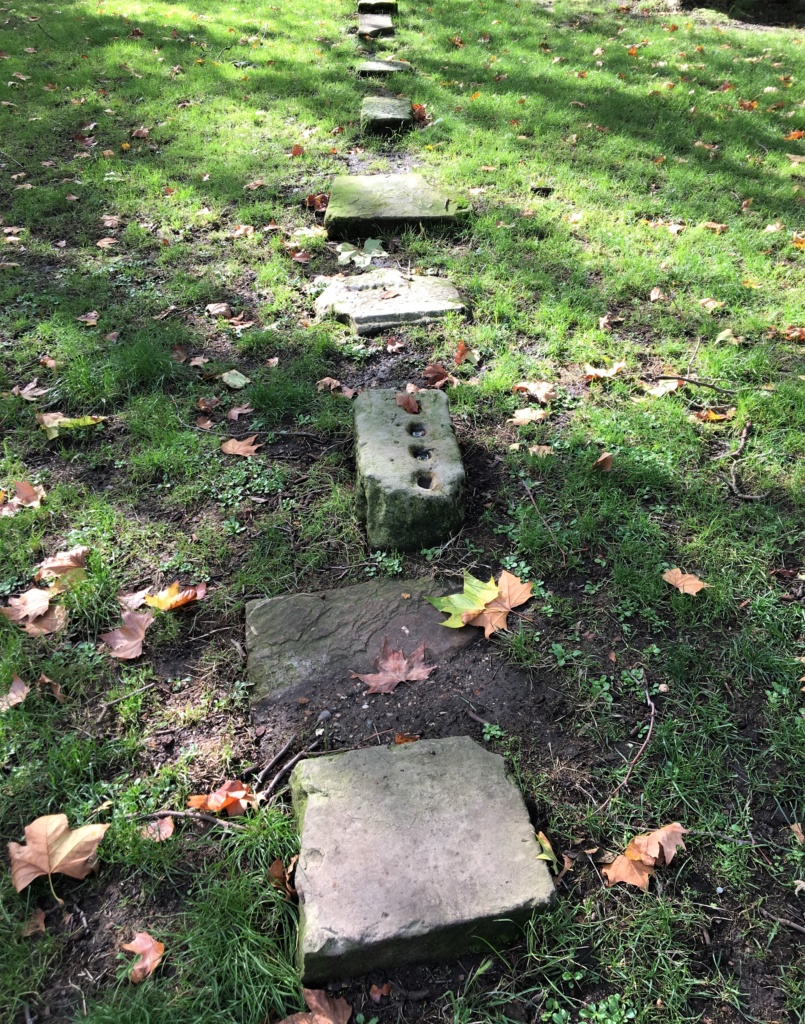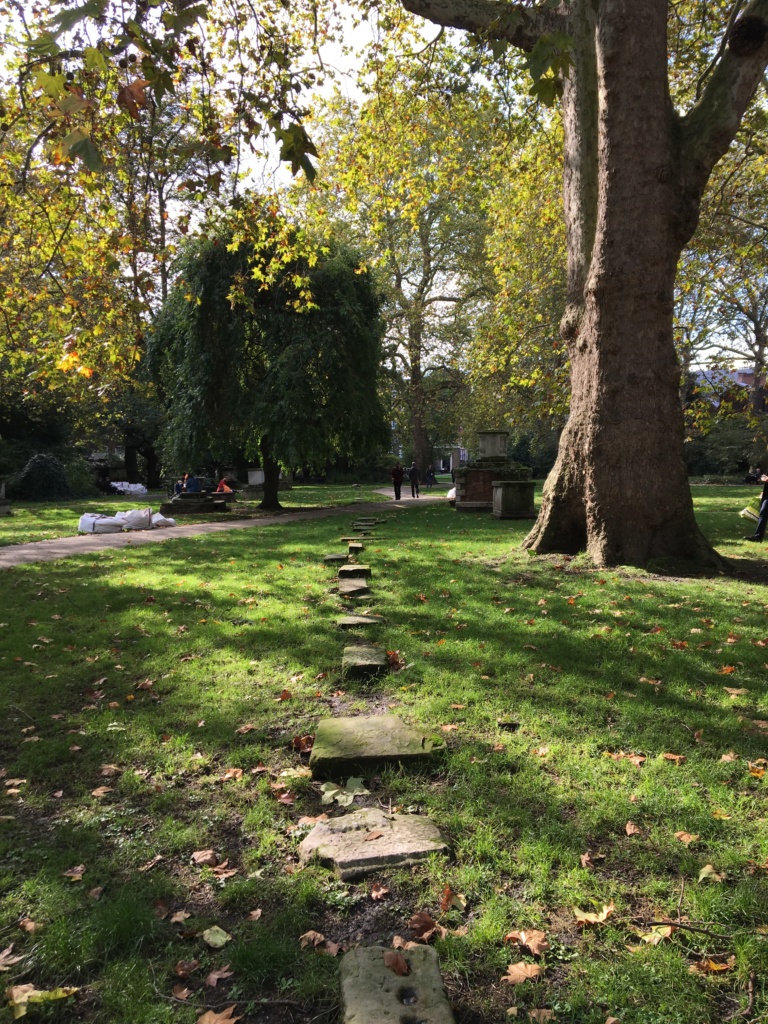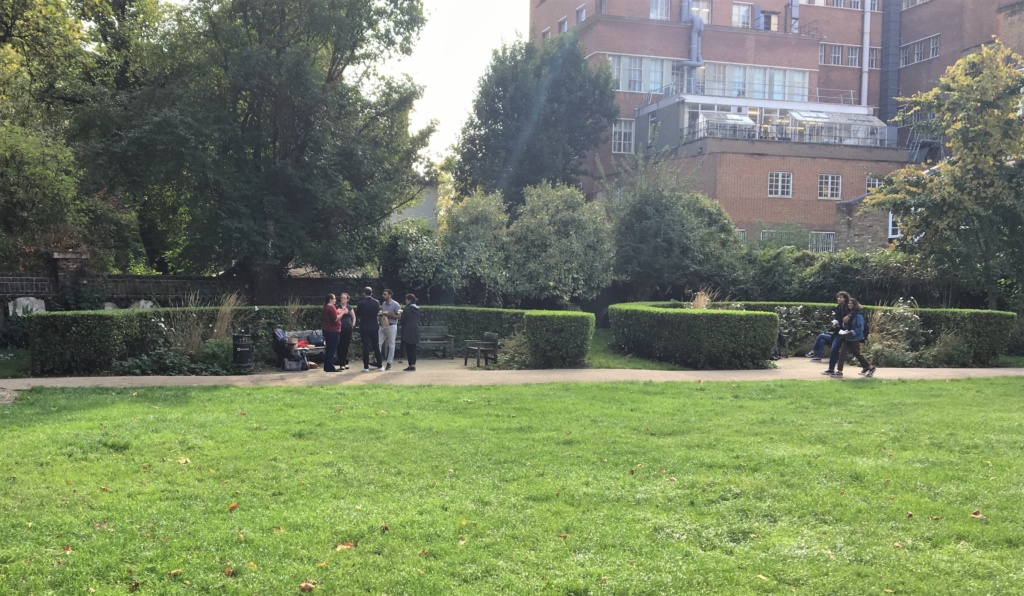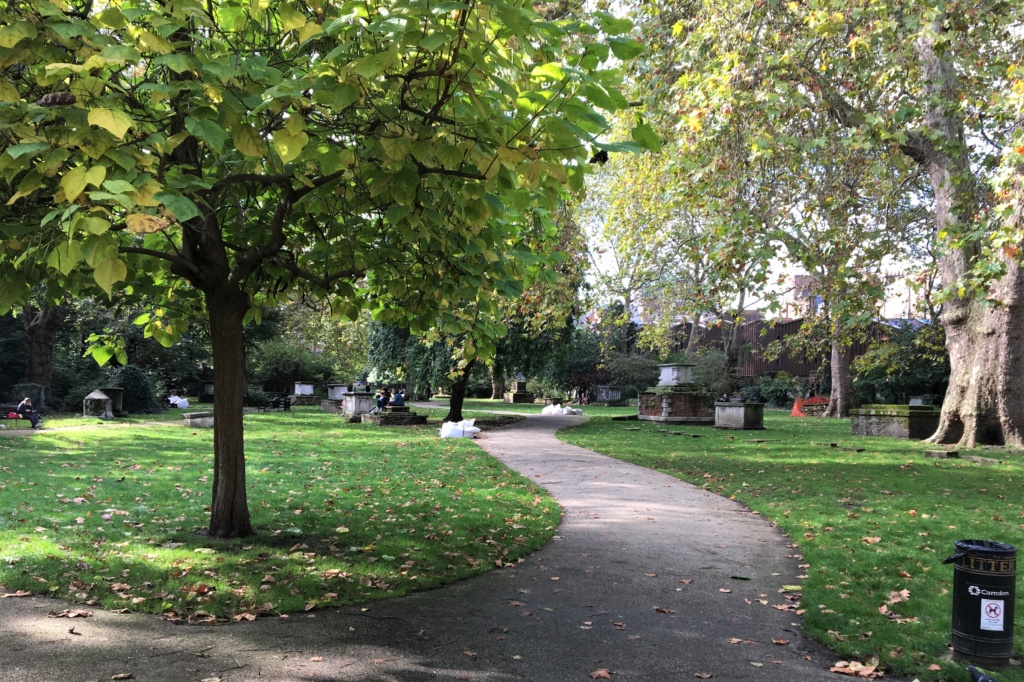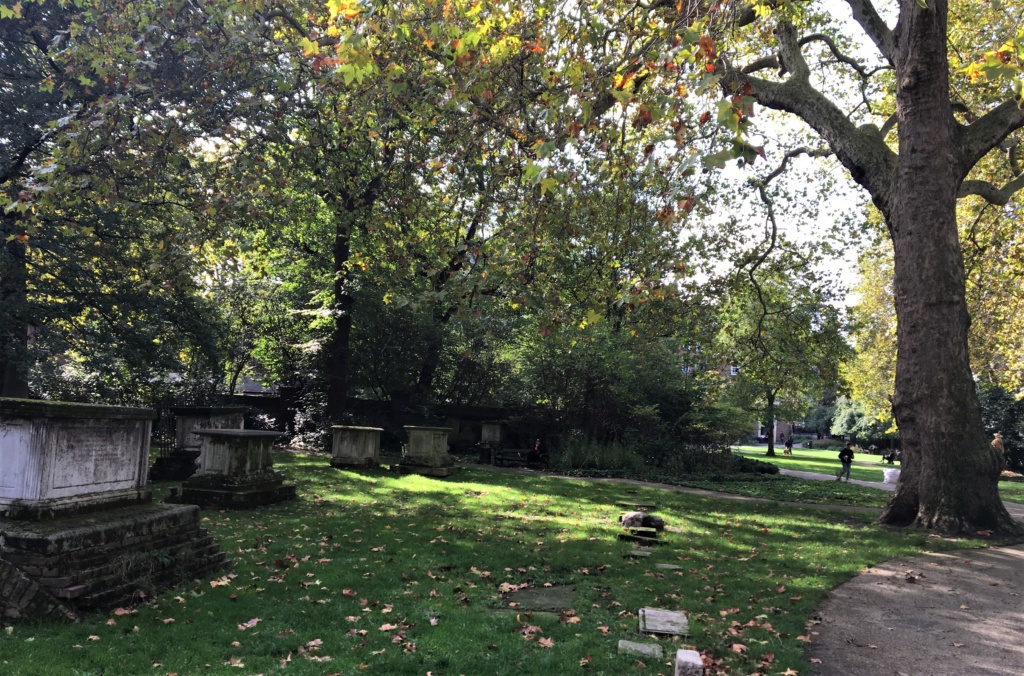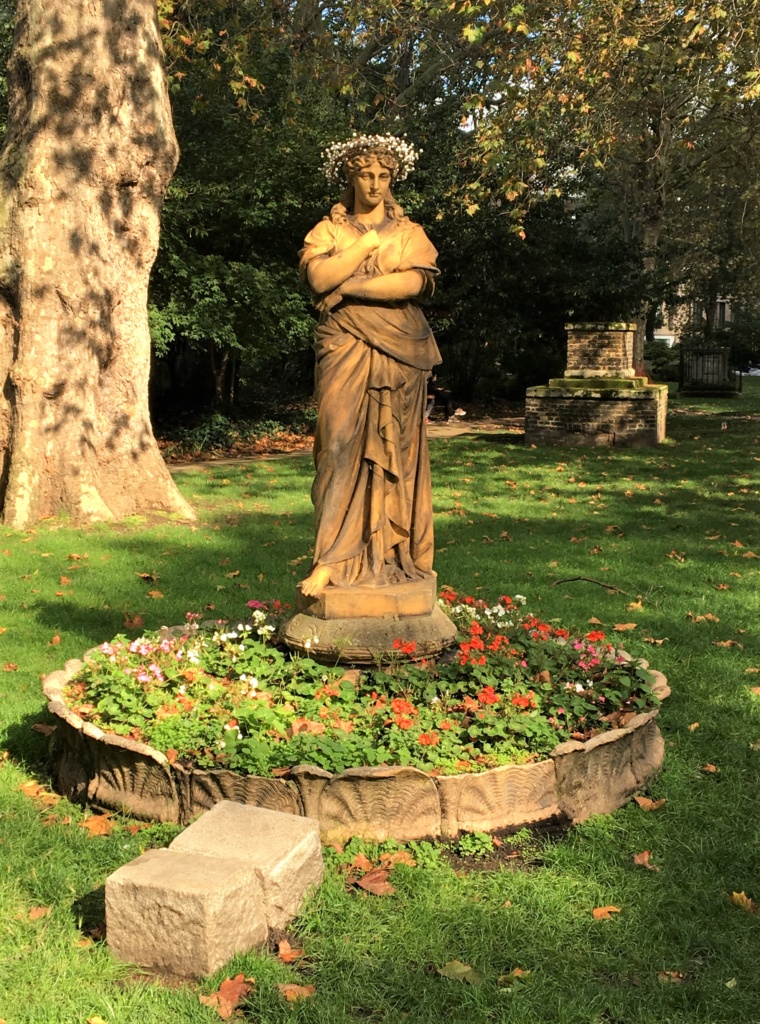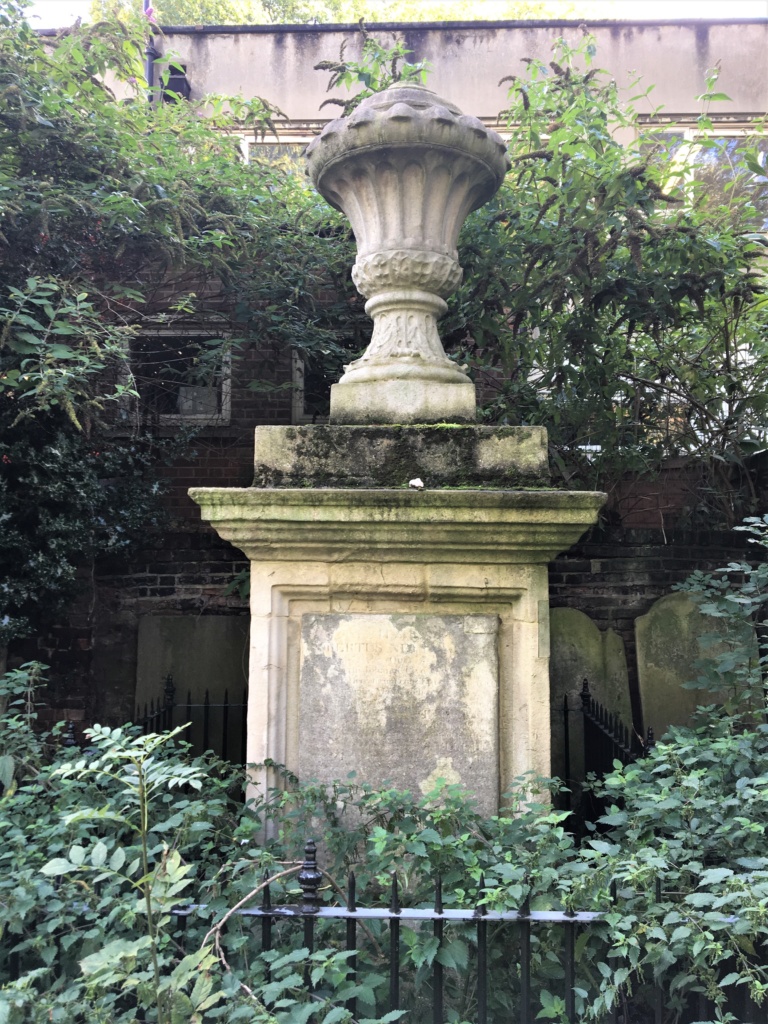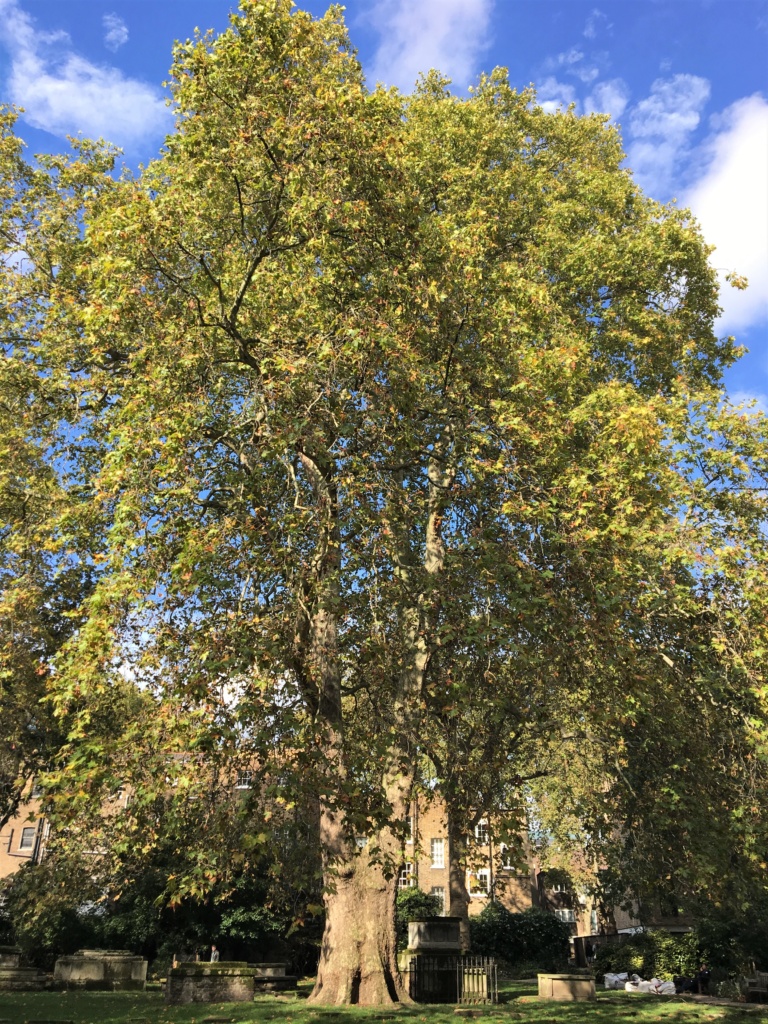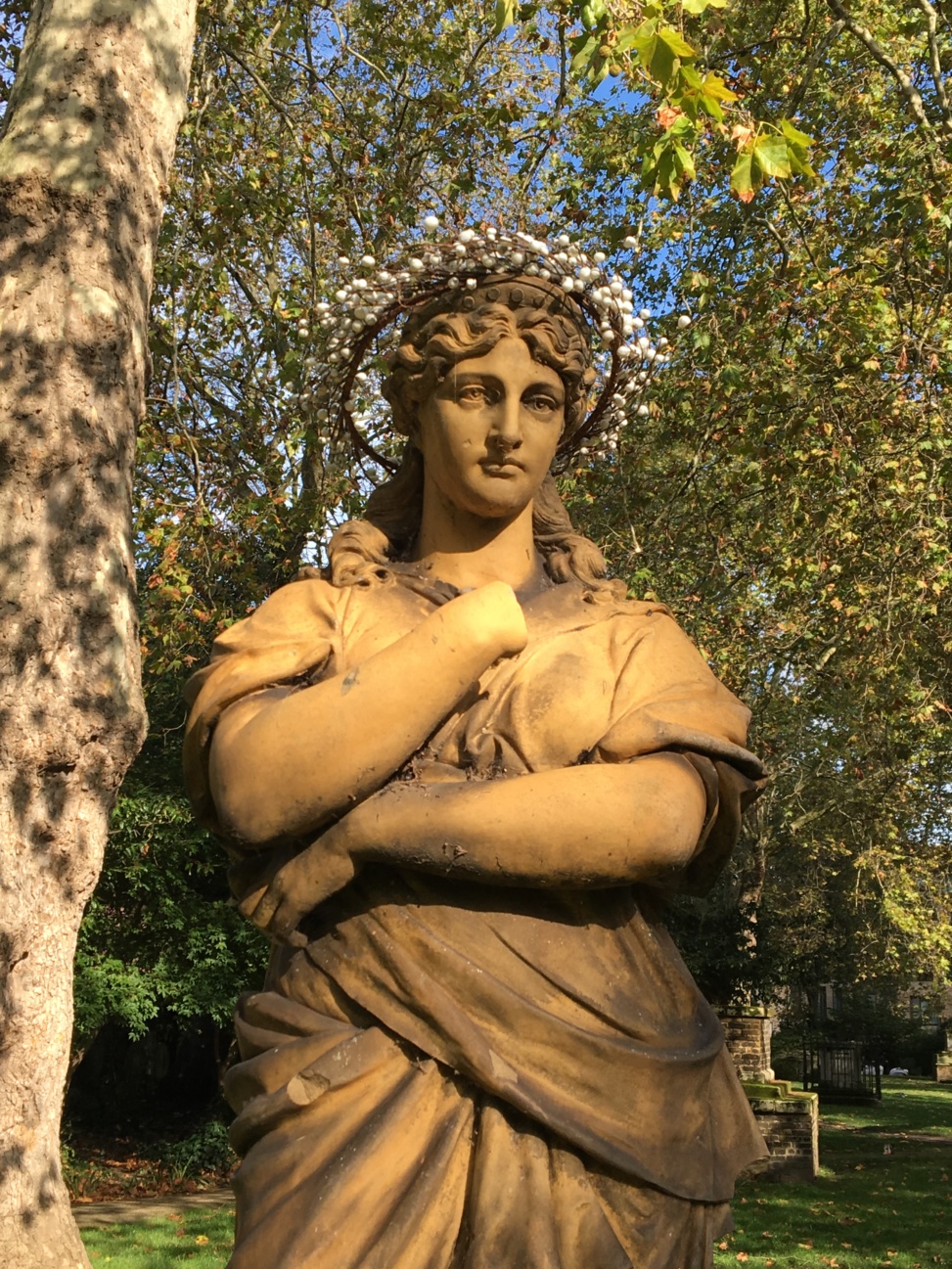I have several regular lunchtime walking routes and thought that they covered most of interesting streets in the area. Turns out I was wrong. I turned a corner this week to find an unfamiliar view. There was some greenery in the distance and black iron railings. When I got close I could see a sign by the gate which read St George’s Gardens. I’d never heard of the place before. How on earth had I missed it?
These gardens were previously a graveyard that served two nearby churches – St George’s, Bloomsbury, the lovely Hawksmoor church on Bloomsbury Way and St George’s, Holborn in Queen Square – neither of which had land for a graveyard by the church. In fact, it appears that this graveyard was the first Anglican graveyard set apart from a church in London. The graveyard was divided in two so that each of the St George’s churches could have half. This line remains in place today and is marked by a series of broken headstones.
The graveyard opened in 1713. Anna, favourite grand-daughter of Oliver Cromwell, who died in 1727, is buried here. It also contains the bodies of ten Jacobites who were hung, drawn and quartered after the Battle Of Culloden in 1746. In 1777 the first incident of bodysnatching – ie the theft of a body for dissection – was recorded here.
In 1800 the graveyard was full and closed to new burials. By the end of the nineteenth century London had grown from a city of one million people at its beginning to more than eight million. It was considered more important to have outdoor recreational space for the living population than an old burial ground and in 1890 the space was reopened as a public garden by Queen Victoria’s daughter Princess Louise, after whom the great pub in High Holborn is named.
The gardens are charming and a pleasant place to sit in, particularly in Summer. The headstones have been neatly stacked against the perimeter walls and paths have been laid through open lawns and trees and bushes. Londoners eat their lunchtime sandwich on the benches that edge the gardens. On the day I visited there was at least one courting couple.
There is a striking statue of a woman that looks like it must have been a religious artefact, but no. A sign on the gate tells us that she is: “Euterpe the Muse of Instrumental Music. Terracotta figure, one of the nine muses which decorated the façade of the Apollo Inn (1898), on the corner of Tottenham Court Road and Torrington Place. On its demolition in 1961, Anthony Heal {who extended his shop onto the site} presented this statue to St Pancras.” That shop is, of course, Heal’s.
The gardens are on the small side, only three acres at most, but they are perfectly formed and pleasantly peaceful. I have added them to my list of regular lunchtime walks. As the great Arnold Schwarzenegger famously said, I’ll be back.
